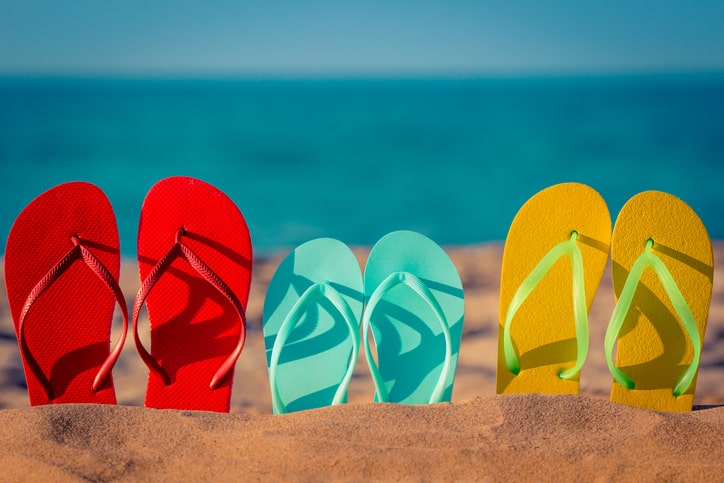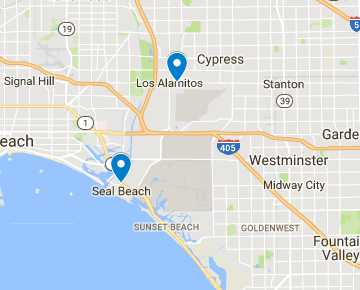Sandals may seem like a comfortable choice during the hot summer months, but did you know that wearing them too often can cause serious foot problems?
Warm weather means a lot of things. It’s a time for sunscreen and big hats, swimsuits and beach days. For many people, it’s also a time to trade in clunky boots and sneakers for sandals and flip flops. While occasionally wearing sandals to the beach or spa is harmless, wearing them regularly can cause a host of problems including fallen arches (AKA flat feet) and other foot pain issues. Learn more about the dangers so you know what to watch out for.
What Issues Do Sandals Cause?
When worn frequently, sandals and flip flops can cause a range of foot issues that may require treatment from a professional. The most common complications you can experience are:
Plantar fasciitis:
When we talk about the importance of arch support, this is what we’re talking about. Your plantar fascia — the thick band of tissue that connects your heel to the ball of your foot — requires a lot of support to stay healthy. Unfortunately, sandals don’t offer that support. Without it, the plantar fascia can become inflamed and a condition called plantar fasciitis can develop, which makes walking painful and can ultimately lead to fallen arches. In addition to the pain caused by the condition itself, a common side effect of plantar fasciitis is a heel spur. Heel spurs are painful bony protrusions on the underside of your heel bone that can form due to strained foot ligaments and muscles, as well as stretching of the plantar fascia tissue.
Stress fractures and sprains:
Sandals don’t have proper shock absorption. Without it, you can experience stress fractures — minute cracks — in the bones of your feet. These stress fractures can be extremely painful and have long-term consequences if you aren’t careful. Plus, that same lack of shock absorption can lead to ankle sprains.
Bunions:
Your toes need to over-grip in order to keep any pair of flat shoes on your feet — including sandals and flip flops. Flip flops may seem like an easy, comfortable solution to your pain if you have bunions on your feet, but actually this excessive gripping can aggravate your sores, causing even more pain and discomfort than before.
Blisters:
The thin piece of fabric or rubber connecting a flip flop or sandal to your foot can easily rub against your skin and cause painful blisters. Not only are blisters painful, but if they pop when you aren’t wearing protective shoes, you also become vulnerable to bacteria, fungi, and viruses.
Why Do Sandals Cause All These Issues?
The simple answer is that sandals don’t usually have any real arch or ankle support, and their thin material means there is also little to no shock absorption as you step. Your foot requires support and shock absorption to remain uninjured. Without it, you put yourself at risk of the serious conditions described above.
Remedies for Flat Feet Pain
The first thing you need to do if you start experiencing any of the conditions described above is to stop wearing sandals and flip flops right away. You need to switch to a shoe that is both comfortable and beneficial to your foot health — one that includes both arch support and shock absorption.
From there, you can experiment with a few home remedies to address the pain. Try putting ice on the different areas of your foot and body where you’re experiencing discomfort. If necessary, you can also take anti-inflammatory medications to reduce soreness and swelling. You can also try foot and heel stretching exercises, like rolling the bottom of your foot on a tennis ball to stretch and massage the tissue and ligaments.
If these remedies don’t work, you’ll need to see a specialist for a more serious intervention. These treatments can include bracing or casting, surgery, or sports medicine.
Getting Back on Your Feet
If you’ve spent your summer wearing sandals or flip flops and you’re starting to feel the negative side effects, it’s important that you don’t try to push through the pain. Instead, you should see a podiatrist who can diagnose your condition and come up with a treatment plan that will get you back on your feet and feeling your best in no time.
At Alamitos-Seal Beach Podiatry Group, our doctors have experience treating all kinds of foot injuries. Schedule a consultation today!






